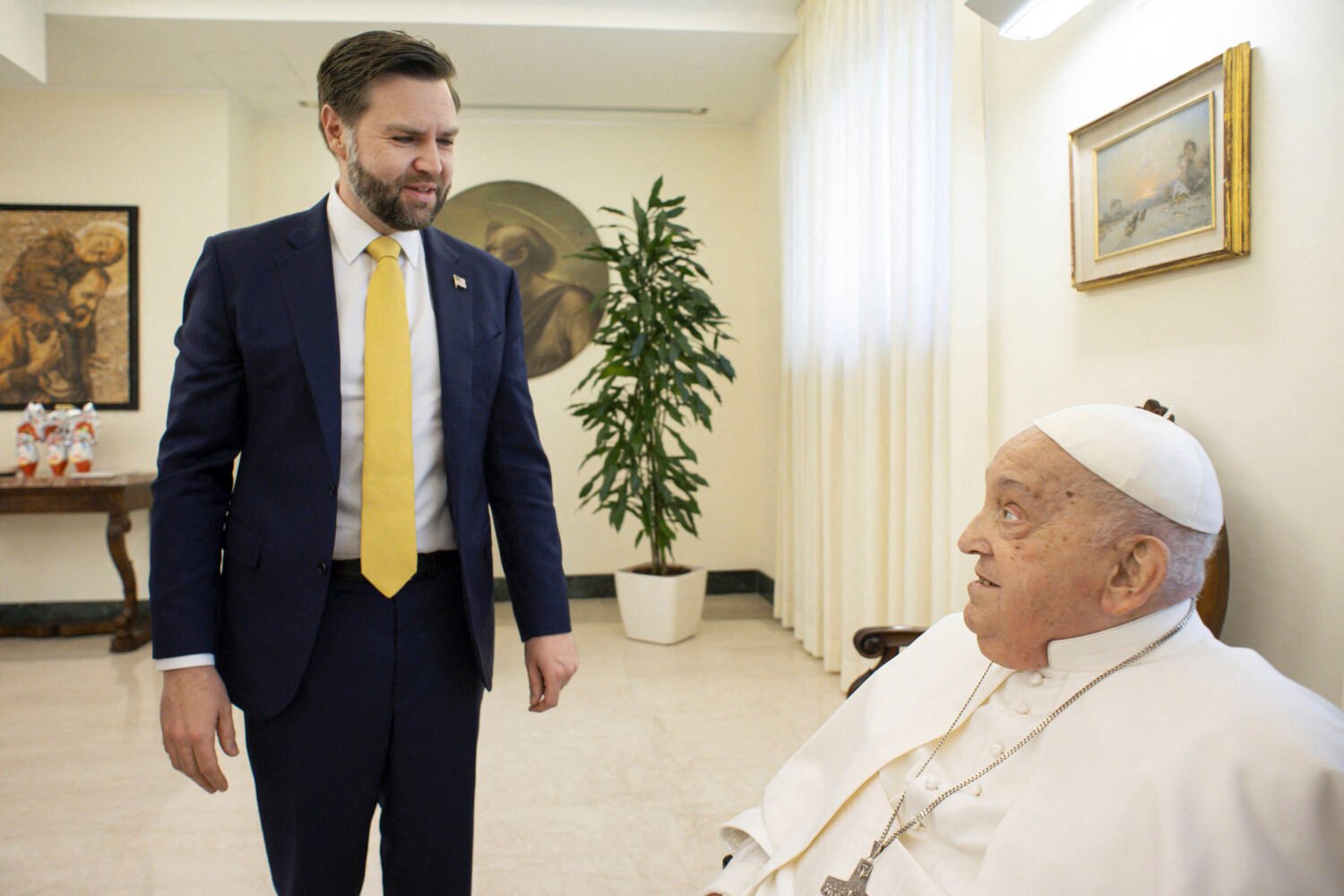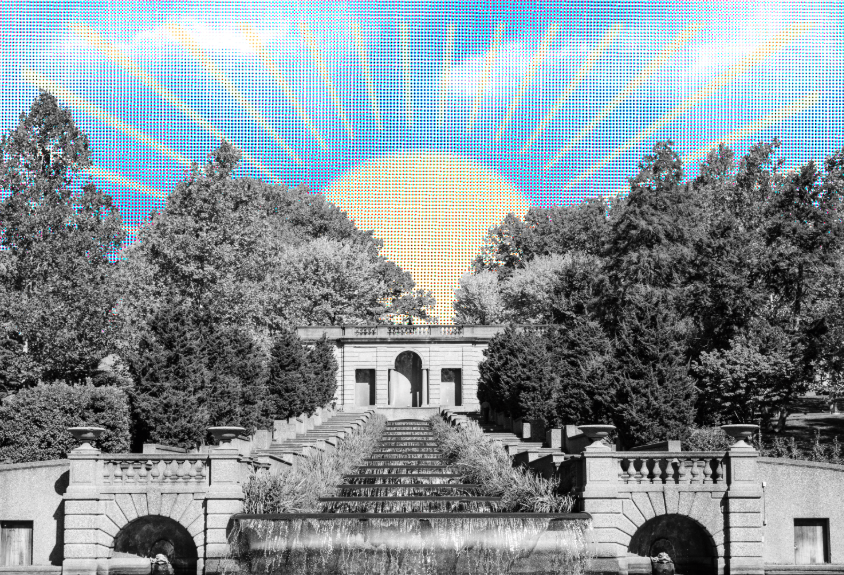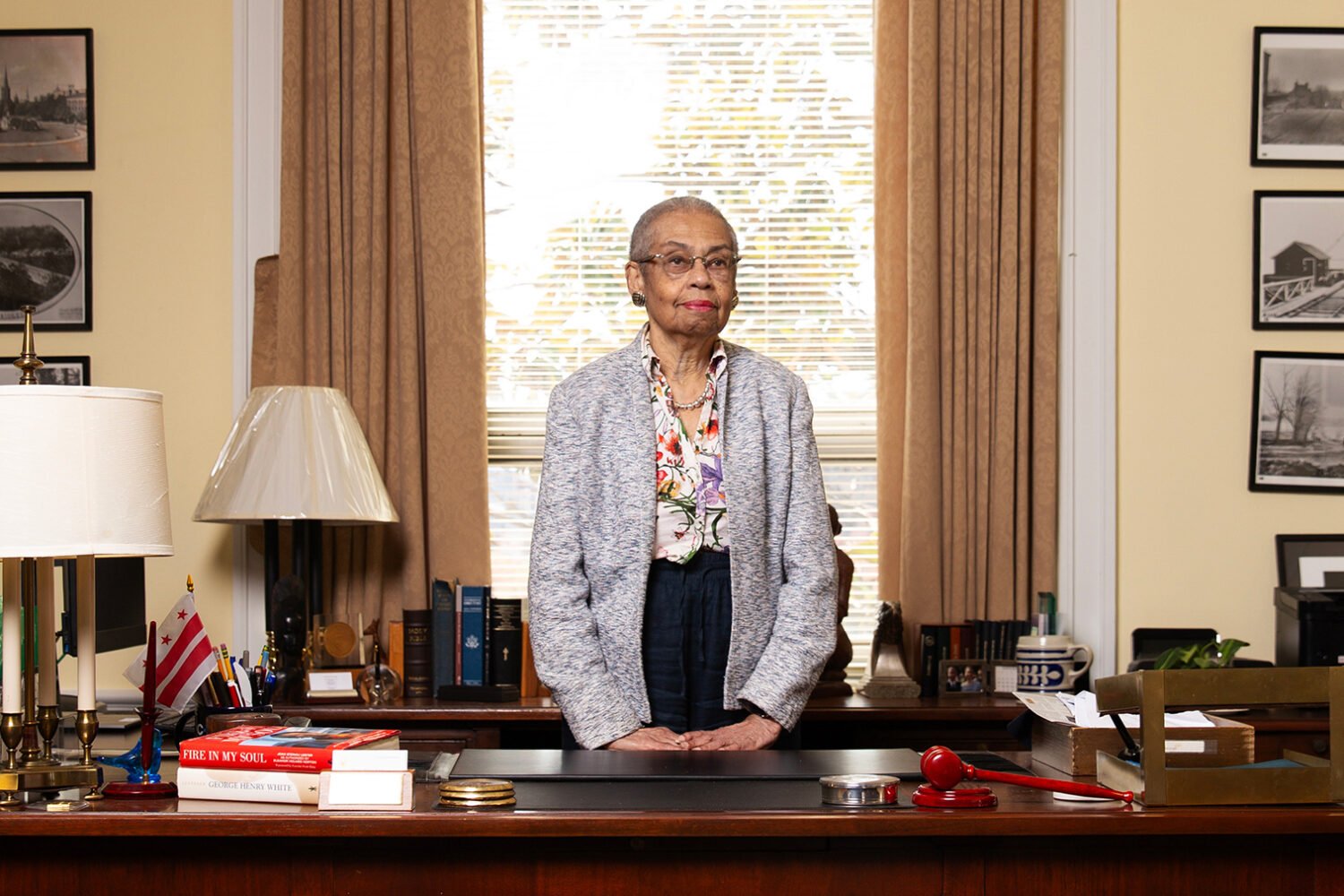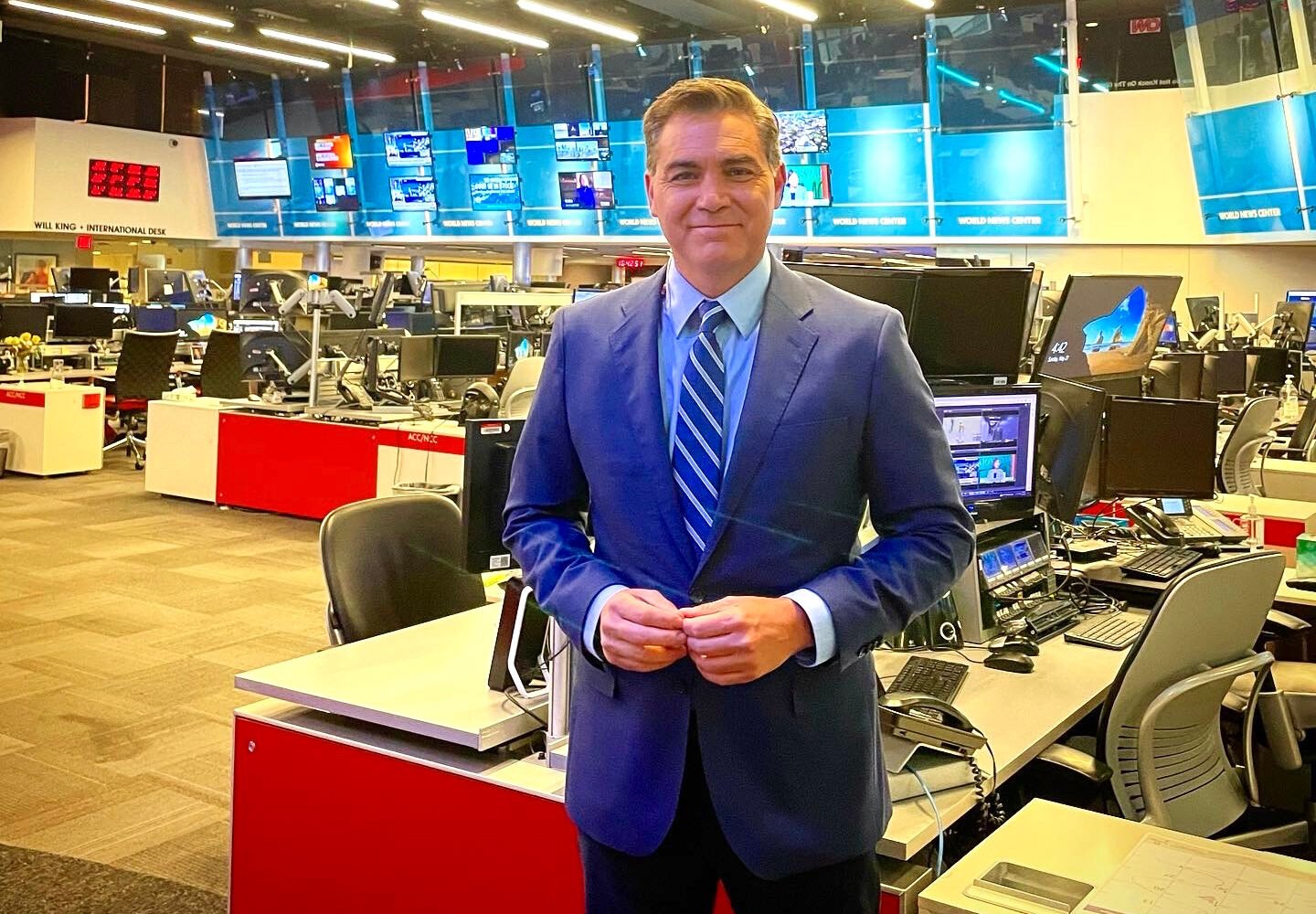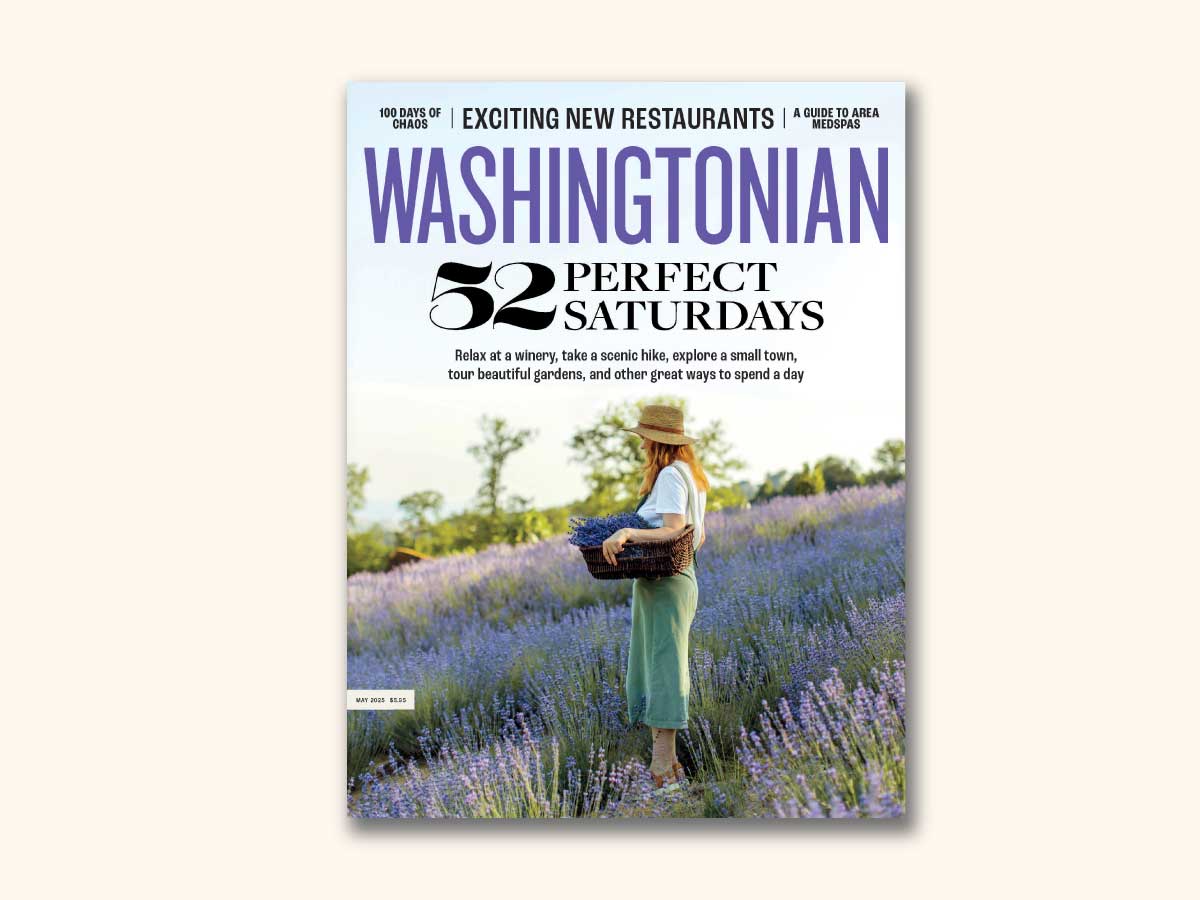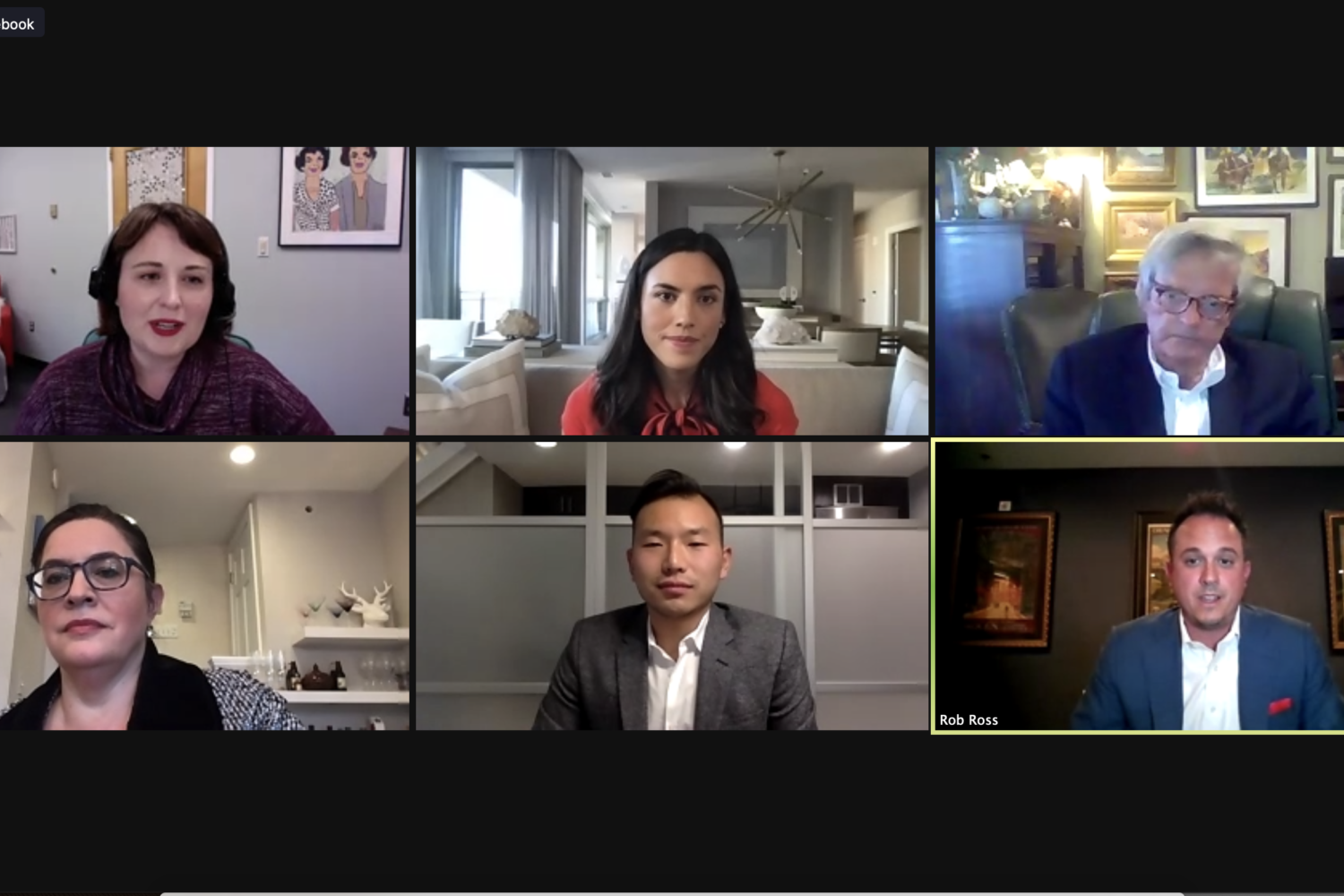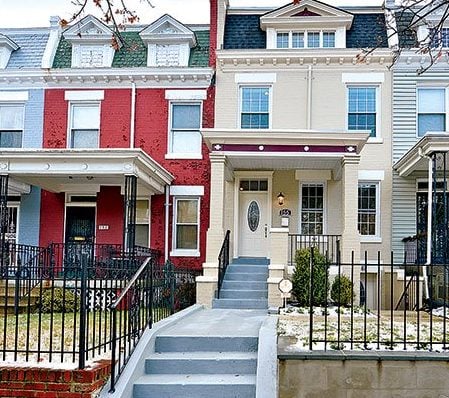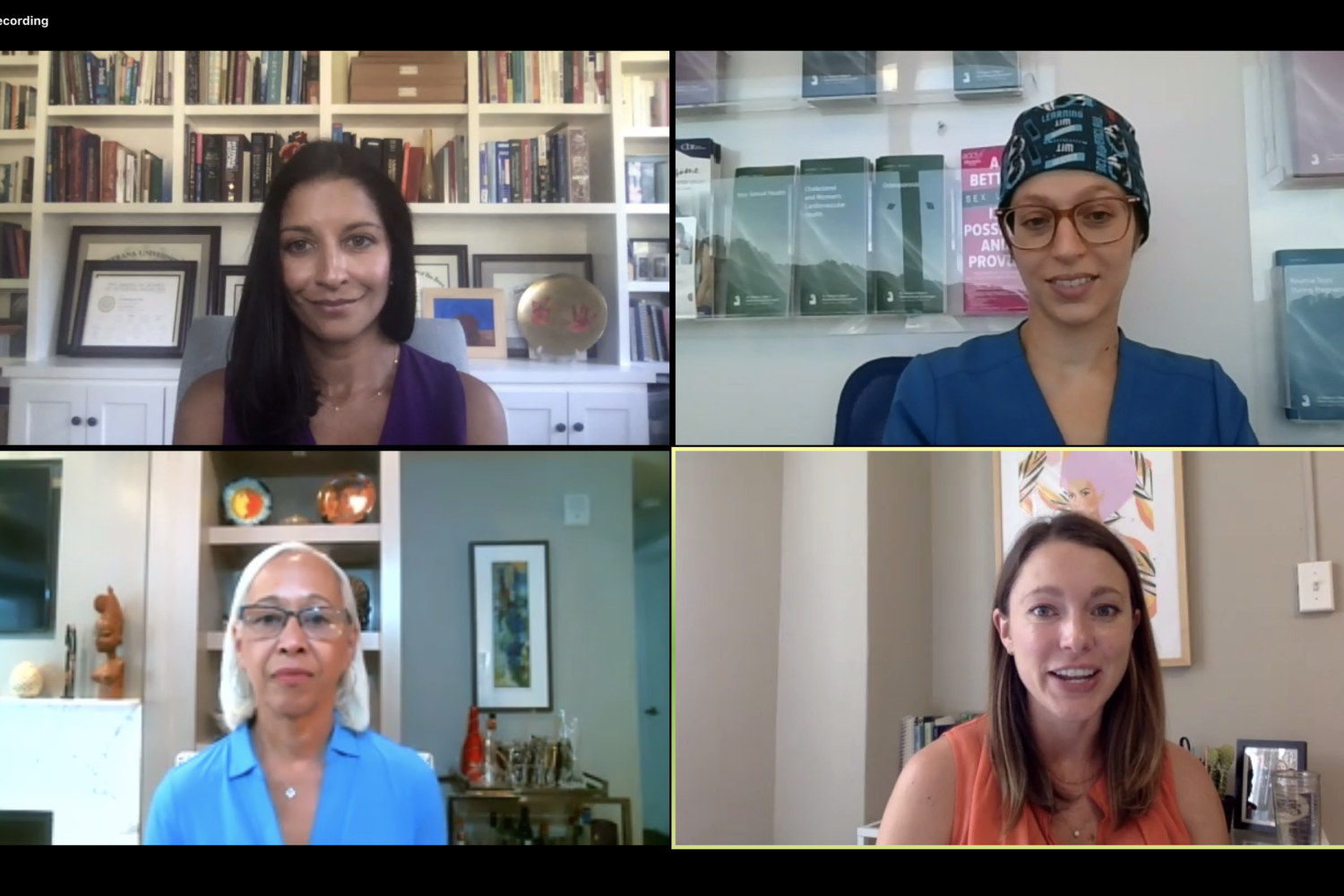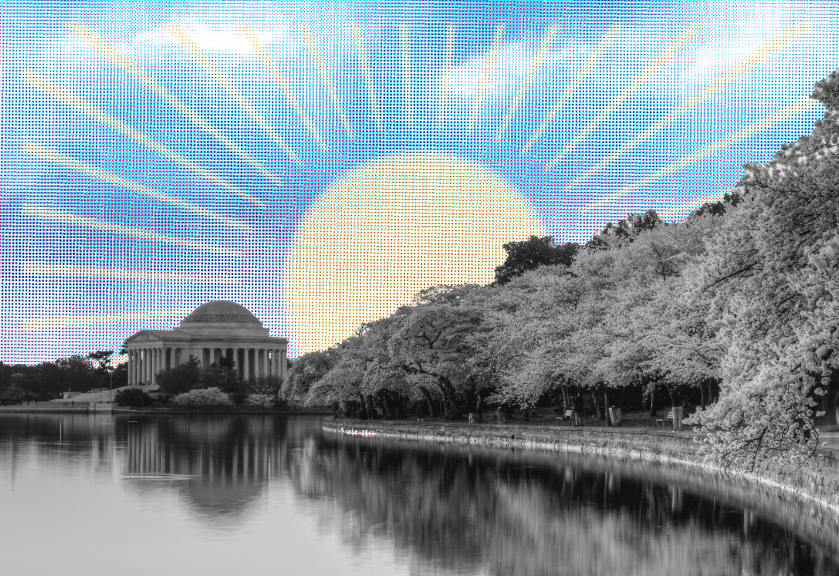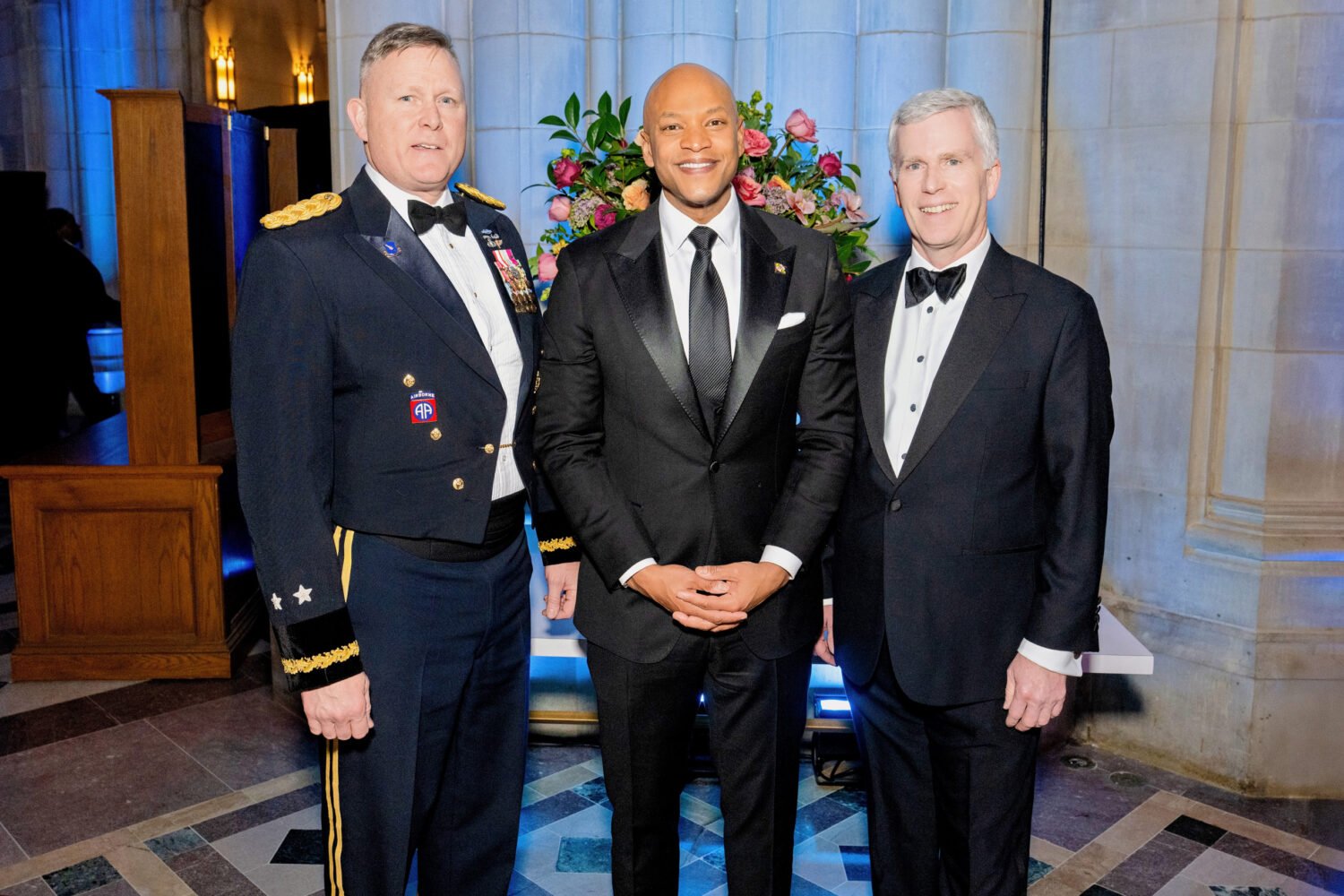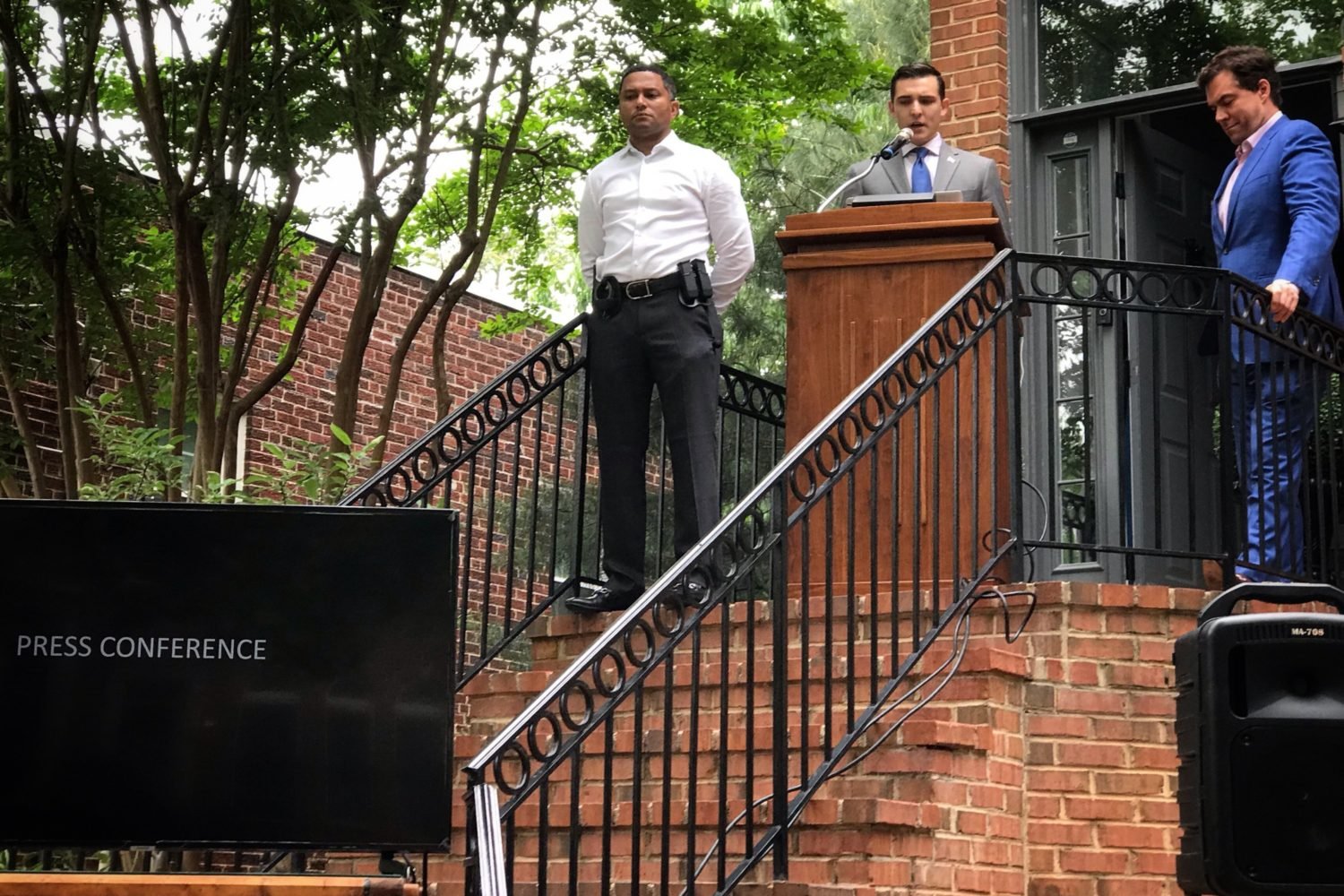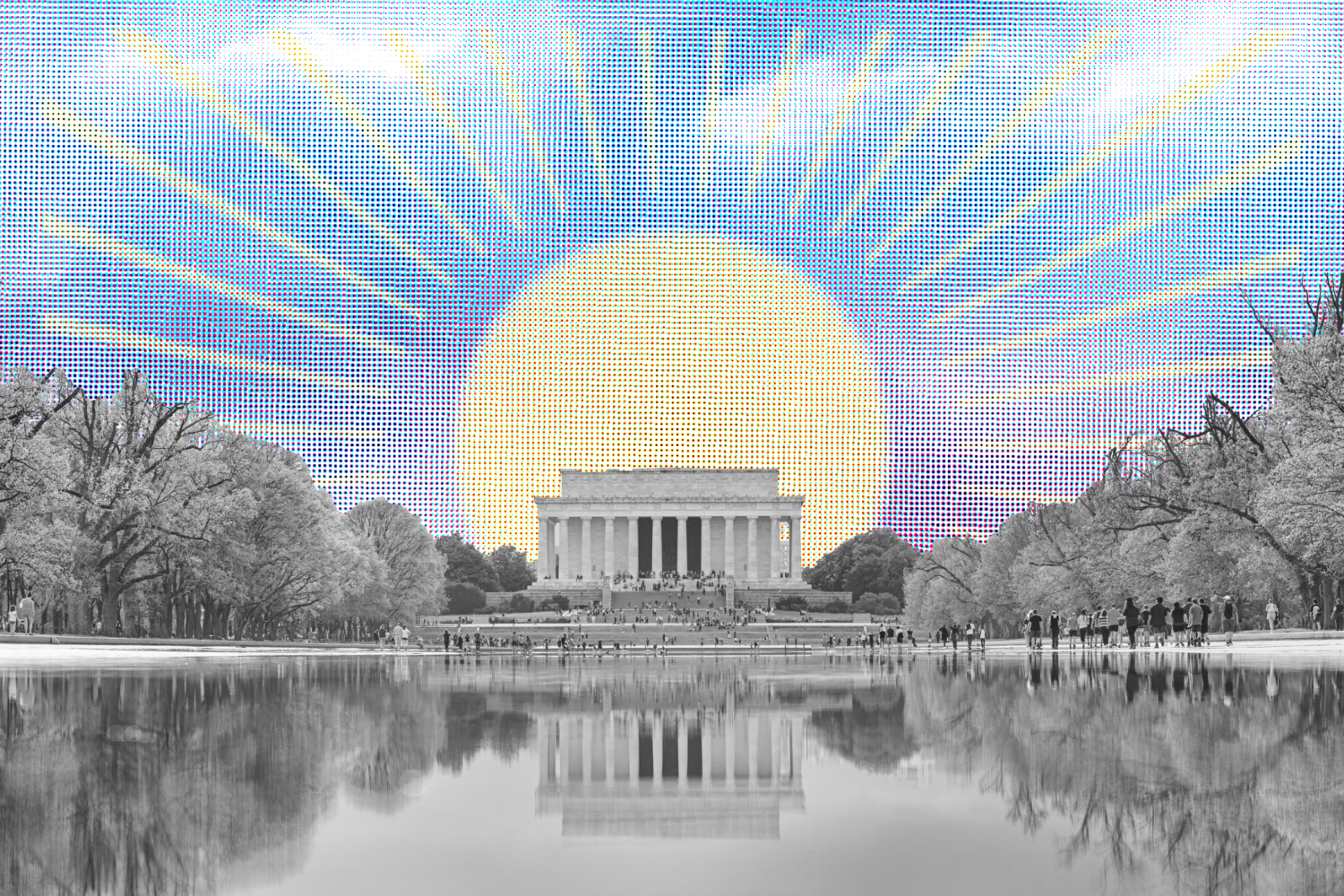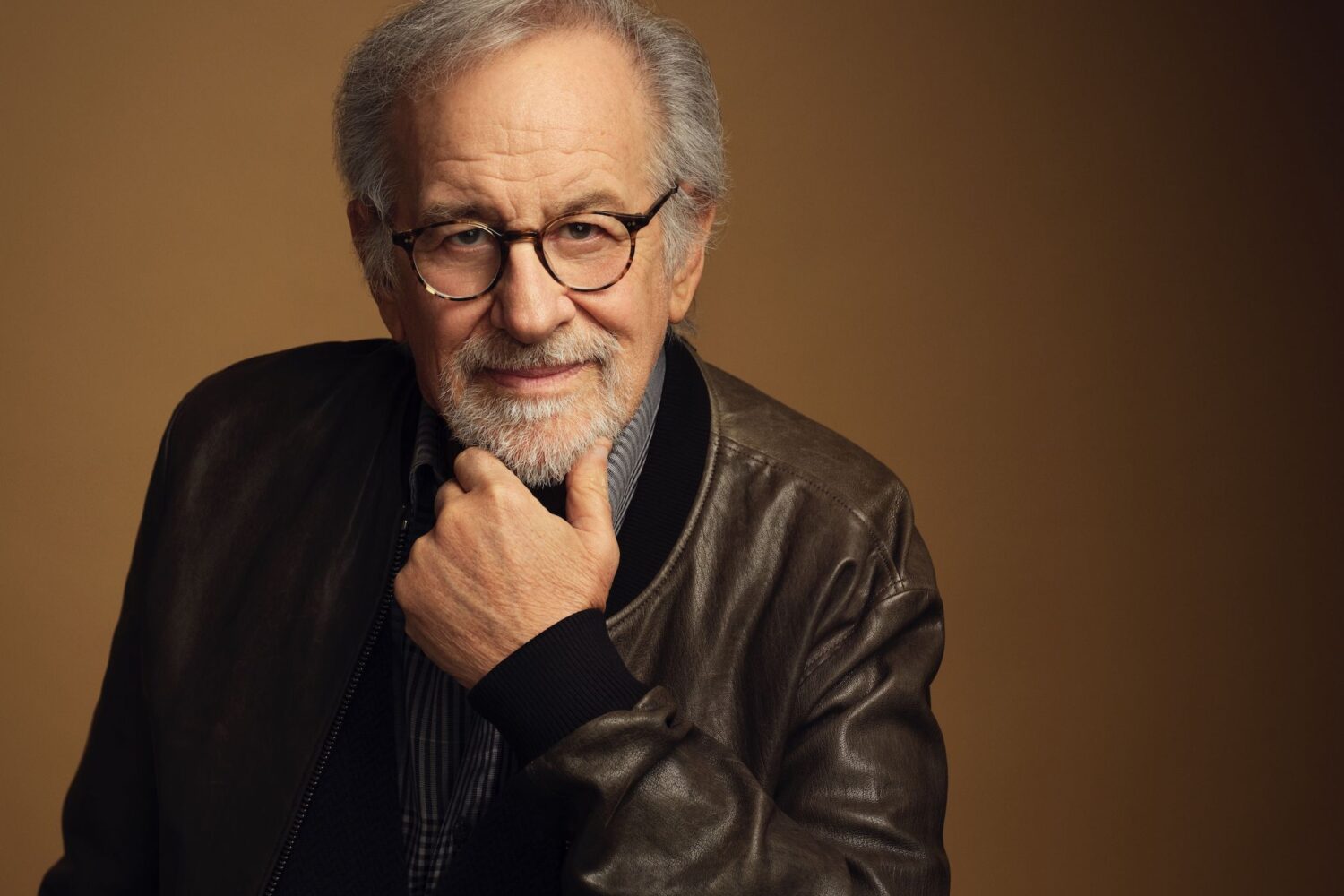At Congressional Cemetery, you'll find the famous alongside those whose interesting stories have been forgotten. Photograph by Andrew Lightman
Tucked into a little-visited corner of the District up against the Anacostia River, a couple of blocks from RFK Stadium and across the street from the DC jail, Congressional Cemetery holds nearly 60,000 graves.
Come at dusk and the light is surreal, the sun setting over the city like a red-hot tear. Come at midday and you might be the only person here, walking the grounds as if it’s your own private estate. It feels far away from the Washington power games.
Which is odd because it’s Congressional Cemetery. It’s just 18 blocks from the Capitol and is the resting place for scores of people from that more famous place.
But once they come here, they seem to disappear. There’s a man named Stephen Pleasonton, buried near the main entrance, who rescued the Constitution and the Declaration of Independence from being captured and burned by the British in the War of 1812. He crammed the documents into coarse bags, commandeered a few rickety carts amid the general panic, and took off for Georgetown with minutes to spare. Had he not made it, how different would our history be?
When my girlfriend, Leah, first asked me to meet her at Congressional Cemetery, I was skeptical. To hang out at a graveyard seemed morbid and strange.
“There’s nothing to do there,” I said.
“There’s history,” she said.
“History? That’s over by the Mall.”
“Meet me at the entrance.”
Next: The final resting place of the first female presidential candidate
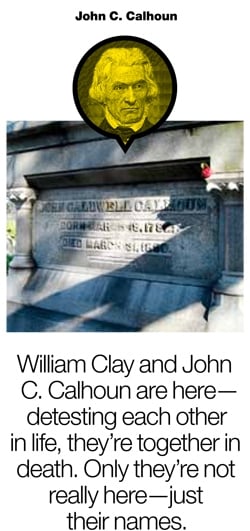
History. If Sarah Palin becomes the next female candidate for President, she should stop by the cemetery and pay homage to the first one. Belva Ann Lockwood—attorney, educator, author, suffragist—ran for President in 1884. Four thousand people (all male, of course, because women couldn’t vote for another 36 years) voted for her.
Palin is polarizing, but she has nothing on Preston Brooks. A congressman from South Carolina, he was infuriated when, in 1856, Senator Charles Sumner of Massachusetts denigrated Brooks’s cousin, Senator Andrew Pickens Butler, a supporter of slavery, on the Senate floor. Said Sumner of Pickens: “The senator touches nothing which he does not disfigure with error. . . . He cannot open his mouth, but out there flies a blunder.” Two days later, Brooks defended his cousin’s honor by beating Sumner with a cane until the Massachusetts lawmaker was unconscious.
Cable news can give the impression that today’s partisan fighting is more heated than ever, but there’s solace in the fact that we have a long history of congressional insults. And that we’re not caning each other anymore.
For Preston Brooks, Congressional Cemetery offers further solace: While 18 blocks away the incumbents may be thrown out every two years, at the cemetery they remain in office forever.
Legend has it that the night after John Wilkes Booth fired the shot that killed President Lincoln, one of his fellow conspirators, Lewis Powell, hid in a vault at Congressional Cemetery before making his way across the river.
Seven people who were at Ford’s Theatre that evening to see the play Our American Cousin are here as well, including the doorman who let the President inside.
As are two of the 16 doctors who worried and bled his body. Plus a policeman who helped carry the President from the theater to William Petersen’s boardinghouse across the street.
The owner of the inn where Booth had a final drink for courage before leaving for the theater is buried here. And the businessman who rented Booth a horse that night.
So is Booth’s co-conspirator David Herold, who fled with the broken-legged assassin for 12 days across Maryland and Virginia and was caught after the shootout on Garrett’s Farm, tried, convicted, hung, and buried in an unmarked grave.
One lesson of the cemetery: The history of this city is not just of leading men but of small actors as well, even unmarked and unidentifiable ones. And all end up in the same place.
Next: Forgotten history and empty tombs
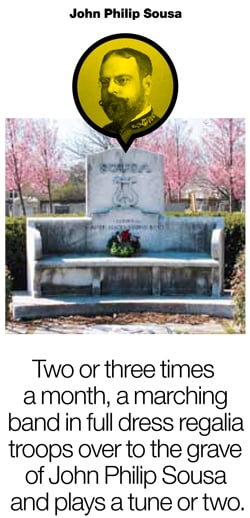
Leah and I walk the brick paths and take in the names and dates and inscriptions. The tombstones next to the cemetery chapel are lined up in crisp, soldierly rows. Down the hill, they huddle together like cold commuters at the nearby Potomac Avenue bus stop or they ride and tip over groundswells like surfers. Some graves are actually tables where you can rest and picnic. Some are crypts, half buried in the ground. Others stand alone in clear expanses—statues dropped from space.
The cemetery’s stories illuminate a history that the museums on the Mall don’t cover—for example, that brothels were legal in the District until 1914. Mary Ann Hall, DC’s all-time finest madam, for decades had a brothel not far from the Capitol. She bought nine plots at the cemetery—one for her mother, one for her sister, and several others for men who are now nameless. Lovers? Customers?
In her time, she was famous for keeping a cellar stocked with $100 bottles of wine and Champagne—$100 in 19th-century dollars. She was worth the equivalent of millions when she died. A low stone coping surrounds her plot. WELCOME, it says. Even in death, 125 years on, a graceful host.
District native William H. Cross is buried here—most of him. In 1881, he was part of an expedition to the North Pole that got stranded. When rescue boats finally came, they noted that some of Mr. Cross was missing. “His friends had him over for lunch,” explains Patrick Crowley, the chairman of the Cemetery Board.
Beau Hickman is buried here, but not his spirit. A gambler, carouser, and freeloader, Hickman never held a job and got by on his wits and charm. When he died in 1873, he was buried in a potter’s field. By the time his friends learned of this, they were drunk and Hickman’s remains were being dug up by grave robbers. Hickman’s friends broke up the robbery, carried him to Congressional Cemetery, and put him in a shallow hole they dug themselves. Hickman’s aggrieved ghost is said to haunt what used to be the site of the hotel where he lived, at Sixth Street and Pennsylvania Avenue in downtown DC.
Two or three times a month, a bus pulls up at the front gate and unloads a marching band in full dress regalia, and it troops in formation over to the grave of John Philip Sousa. There the musicians play a tune or two. Then they troop back, board their bus, and drive back to Indiana or New Jersey or South Carolina—wherever they’ve come from.
Sousa is buried here not because he’s a national hero and the composer of “Stars and Stripes Forever” but because he was a local kid: Southeast DC–born, –raised, and –buried. That’s also why J. Edgar Hoover is buried here, in a small family plot surrounded by iron fencing.
Alongside these graves celebrating local residents are rows of tombs for important people from distant places who are buried in those distant places. Called cenotaphs and shaped like squarish, half-buried dunce caps, these empty tombs commemorate, not at all artfully, the lives of national political leaders. Henry Clay and John C. Calhoun are here—detesting each other in life, they’re together in death. But not really. Just their names. Tip O’Neill is here, too. Only his name. John Adams. His name. Empty graves.
Next: The first openly gay serviceman
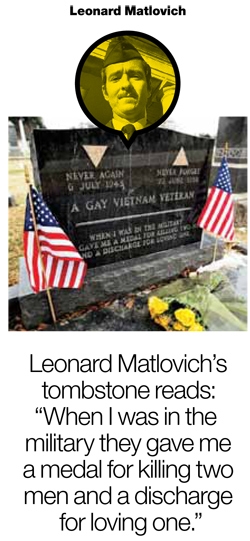
Just when it seems the cemetery has crossed over into absurd symbolism, you come across the inscription on the headstone of William Miller, age one year, four months: PARENTS, FOR ME DO NOT LAMENT. I WAS NOT YOURS, BUT ONLY LENT.
Tom Lantos, who died three years ago, is one of the most recent members of Congress to be buried at the cemetery.
Representing San Francisco, he was pro-choice, pro–gay rights, creator of human-rights committees, an advocate for international justice—he was also the only Holocaust survivor to serve in Congress.
Then there’s Leonard Matlovich, the first openly gay serviceman, buried in a hollow beneath a cherry tree. When he came out of the closet in 1975, it was a national news story, covered by the networks, trumpeted on the cover of Time. He was discharged from the Air Force and later died of AIDS. Matlovich designed his tombstone, which reads: WHEN I WAS IN THE MILITARY THEY GAVE ME A MEDAL FOR KILLING TWO MEN AND A DISCHARGE FOR LOVING ONE.
Perhaps what’s most striking about Matlovich’s resting place is the gravestones nearby: They have dates of birth but not of death. These stones are placeholders for men and women young and healthy who want to spend their eternal rest next to their hero.
Also near Matlovich is the grave of Clyde Tolson, J. Edgar Hoover’s longtime companion. Tolson’s family didn’t want him next to Hoover and insisted on a spot 30 yards down the hill from him. Matlovich took the one next to him.
Lieutenant Dan Choi, the outspoken gay serviceman who became the face of the push to end the military’s “don’t ask, don’t tell” policy, came by early in the morning on Veterans Day last year to pay his respects. He spent the better part of an hour cleaning off Matlovich’s grave. Then he went to the White House to get arrested. A month later, “don’t ask, don’t tell” was on its way to history.
Thirteen Native American tribes have members buried here, more than in any other place in the world.
“This one is beautiful. Taza, Cochise’s son,” says Terri Maxfield, the cemetery’s office manager, when I visit Congressional again. Maxfield leads me to a grave fronted by a carved head with features reminiscent of a sphinx, elegant and lonely, near a towering evergreen.
We walk across a ridge. “And here is Push-Ma-Ta-Ha, a Choctaw Indian who came to Washington in the 1820s seeking the debt owed to his nation by the government,” Maxfield says. The gravestone notes that Push-Ma-Ta-Ha’s deathbed wish was that the “big guns be fired over me.” The wish was granted. The debt was not paid.
Here is Scarlet Crow. Kidnapped and murdered.
Yellow Wolf—died a month after meeting Mary Lincoln.
Peter P. Pitchlynn, chief of the Choctaw nation, of whom Charles Dickens said in 1841: “He was a remarkably handsome man, as stately and complete a gentleman of nature’s making as ever I beheld.” Pitchlynn pressed for Choctaw claims for decades, with almost no success.
Maxfield tells me she moved to Washington a few years ago and was blindsided by the pace: “You get to thinking politics is the only thing that matters. And then you come here to the cemetery. And there’s something . . . .” She trails off. We’re looking down the hill, over the grave of Push-Ma-Ta-Ha, and past him, at Matlovich’s memorial under a cherry tree.
“Honor,” Maxfield says. “That’s what this place has. It honors people. Even those who had everything taken away from them.”
The flat unbroken rows, the long planed fields, the burial ground as museum—with the same rules not to run, touch, or talk too loudly. Arlington National Cemetery changed everything, Maxfield says. Before it opened in 1864, cemeteries were places where families gathered to play and picnic and toast the departed. Death was a little less scary, a little more part of life.
Congressional Cemetery was built along this older, friendlier model. Burial plots are for sale, Maxfield adds, a thousand of them.
Next: Last lessons from the Congressional cemetery
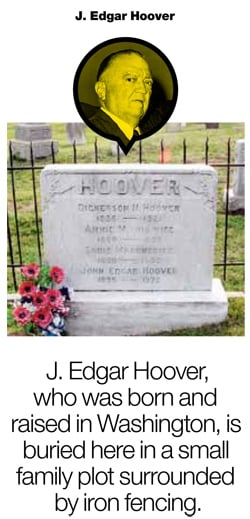
Congressional has no giant monuments. No 40-foot angels, cupids spewing water, multi-storied crypts here. This structural humility recalls the fact that DC wasn’t a city built by powerful industrialists or old money but by a young government and by men working together. It’s a nice thing to reflect on—in some ways, Washington is America’s most democratic accomplishment, started from scratch by men dreaming of equality.
Except for the slaves, who did most of the work. Some are buried here. As are the men who designed their places of labor—William Thornton (the Capitol’s first architect), George Hadfield (its second), Robert Mills (who designed the Washington Monument)—all here.
On a cold spring morning, Leah and I walk through the cemetery again. A light snow is falling, disappearing as it reaches the ground. We pass the empty graves, the slaves who built the Capitol, the first people who held office inside it.
We pass a white granite bench that reads poopsie and baby pie on one side and on the other one lifetime together was not enough. It stops us. What is enough? How many hours a day are enough at the office? What accomplishments are sufficient? What is it fair for us to ask of each other?
In the cemetery’s public vault, where bodies were once stored as they awaited transportation to their final destination, William Henry Harrison, our ninth President, dead from a long speech on a cold day, spent three months. Three times longer than he spent in office.
Near the west gate is Mathew Brady, Civil War photographer, who did more than anyone else to popularize photography, the first and still most influential war photojournalist. He died in a New York poorhouse after being hit by a streetcar—having spent his fortune in the production of his work, mistakenly anticipating that the government would reimburse him—and was buried in a simple grave in a plot owned by his wife’s family. In 1988, a group of 11 people from Ohio paid for and installed a more striking headstone.
Which is another lesson of this cemetery.
Great men are buried here. But so often greatness goes unnoticed, unrewarded, until long after death—if at all. Or, as in the case of President Harrison, it’s met by a quick and undignified end.
“I think,” Leah says as we pass a grave commemorating a Revolutionary War veteran who went on to serve in the House but whom no one has heard of now, “perspective is an important thing to remember. Follow the news too closely and it will seem that the fate of mankind hinges on whether a tax cut expires or not. But it doesn’t.”
“What does it depend on?” I ask.
She takes my hand. The snow is falling. We walk on.
This article first appeared in the April 2011 issue of The Washingtonian.


